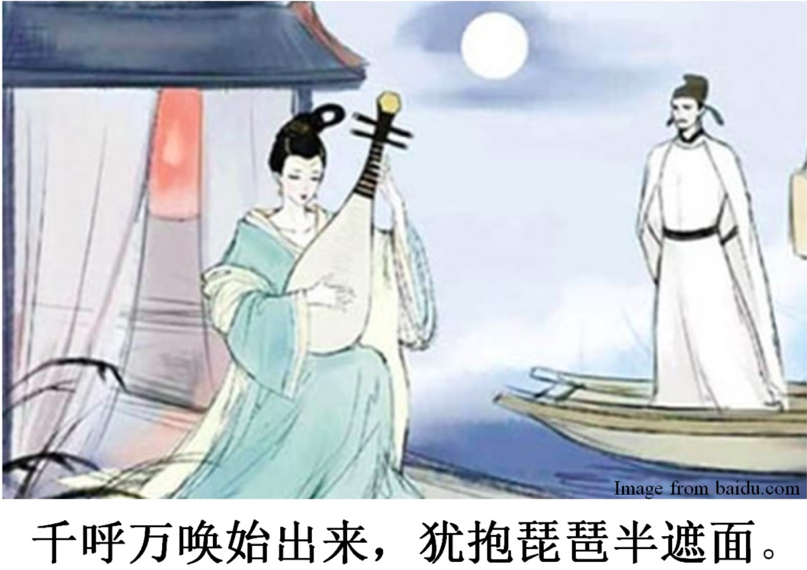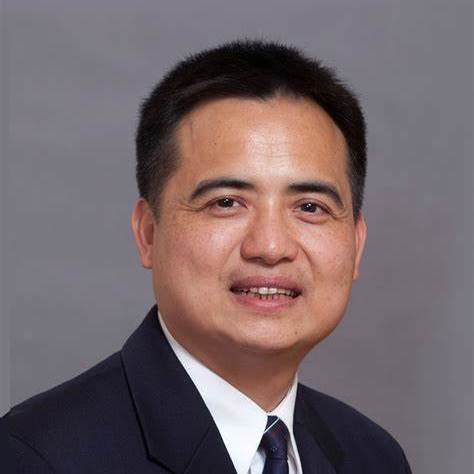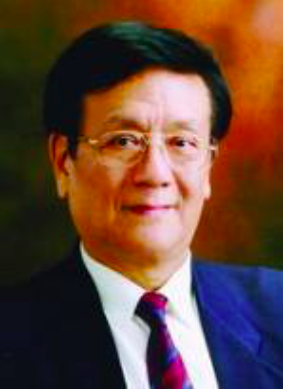“The revisions to the Chinese Patent Law generally serve the proclaimed purposes of placing greater importance on and strengthening IP protection, optimizing enforcement of patent rights, increasing deterrence to infringement, and promoting patent utilization and commercialization of inventions.”

“The Song of the Pipa Player”
On October 17, 2020, the Standing Committee of the Thirteenth National People’s Congress (China’s top legislature) passed the Fourth Amendment to the Chinese Patent Law, which will become effective on June 1, 2021 (“Effective Date”).
As I was digesting the news and browsing through the 29 newly published changes made to the previous version of the Chinese Patent Law, which was passed in 2008, a line from “The Song of the Pipa Player”, a popular poem written in 816 A.D. by Bai Juyi (one of the three most famous poets in China’s Tang Dynasty), came to mind: “Only after our repeated calls did she appear; her face half hidden behind the pipa she held.”
Indeed, while the First, Second, and Third Amendment to the 1984 Chinese Patent Law each came out with clockwork precision eight years after the previous enactment—in 1992, 2000, and 2008, respectively—this Fourth Amendment took 12 years to incubate, and struck a number of new areas that will need to be further revealed in future practice.
Here we provide a brief overview of the most noteworthy aspects of this Fourth Amendment to the Chinese Patent Law (the “New Patent Law”), with some comments on potential benefits and remaining questions.
1. Increasing Patent Infringement Damages to Further Deter Patent Infringement: Introducing Punitive Damages, Raising Statutory Damages, and Shifting Burden of Production for Evidence Related to Damages (Article 71)
As previously reported on IPWatchdog, the New Patent Law aims to offer more protections for patentees and to further deter patent infringement by increasing the costs for patent infringers.
First, punitive damages are now available for serious circumstances, providing up to five times damages for willful infringement.
Second, where applicable, the statutory damages cap is raised from 1 million Chinese Yuan (about US$153,000) to 5 million Chinese Yuan (about US$766,000).
Third, where the evidence related to infringement damages is in the possession of the accused infringer, the burden of producing such evidence can be shifted to said infringer, and if said infringer either refuses to provide such evidence, or provide fake evidence, the court may determine the amount of compensation based on claims and evidence offered by the patentee.
The legislative intent behind the New Patent Law is abundantly clear here: China wants to strengthen protection for the interests of legitimate patent owners. In other words, the value of a good patent shall increase under the New Patent Law. Some questions remain, such as what constitutes serious circumstances to warrant the award of punitive damages, and how much evidence-gathering effort a patentee needs to show before the court shifts the burden to the defendant.
2. Providing Patent Term Compensation due to Certain CNIPA Prosecution Delay and Time Lapse at NMPA for New Drug’s Marketing Approval (Article 42)
The New Patent Law establishes a patent term compensation system allowing for a patent term extension to compensate for unreasonable delay in the granting process at the patent office or the time taken for the marketing review and approval of new drugs at the National Medical Products Administration (NMPA) in China. For patents related to new drugs, upon the patentee’s request, the China National Intellectual Property Administration (CNIPA) may grant a patent term extension not to exceed five years, and the total remaining patent term after the new drug is approved to be marketed shall not exceed 14 years.
Thus, for certain qualified patents, the patent terms can be extended under the New Patent Law. The patent term compensation due to CNIPA prosecution delay is similar to the Patent Term Adjustment (PTA) at the USPTO for U.S. patents. Patent term compensation due to time for NMPA marketing review and approval of new drugs is similar to the Patent Term Extension (PTE) at the USPTO to compensate for the time lapse due to regulatory approval of the product at the Food and Drug Administration (FDA).
The details of how to obtain such patent term extensions at CNIPA are expected to appear in the corresponding new implementation regulations and examination guidelines to be promulgated.
3. Establishing a Patent Linkage Regime for Pharmaceutical Patents (Article 76)
The New Patent Law, in Article 76, establishes a nascent patent linkage regime for pharmaceutical patents for the first time in China.
During the third amendment to the Chinese Patent Law in 2008, an exemption from patent infringement liability for scientific research and experimentation, also known as the Bolar exemption, §271(e)(1) or Hatch-Waxman exemption in the U.S., was added as Article 69(5), which allows generic manufacturers to prepare generic drugs for regulatory approval before the expiration of the innovator’s patent. Article 69 will be unchanged substantively and renumbered as Article 75 in the New Patent Law.
Article 76 of the New Patent Law essentially introduces an early resolution mechanism for drug patent disputes. Under this drug patent linkage mechanism, if a dispute arises between an applicant for a drug marketing authorization and a patentee or interested party of a patent right concerning the drug during the process of marketing review and approval, any of the parties may institute legal proceedings in the People’s Court, requesting a judicial determination as to whether the technical solution related to the drug falls within the patent protection scope; within the stipulated time limit, NMPA may make a decision on whether to suspend the approval for marketing of the drug according to the Court’s judgment.
In addition to seeking a judicial determination, the parties may also ask CNIPA for an administrative adjudication on the patent dispute arising from the patent right concerning the drug for which marketing authorization has been applied.
The New Patent Law further requires NMPA and CNIPA to jointly promulgate specific measures for the linkage between the NMPA marketing approval of the drugs and the resolution of related patent disputes, which measures shall be submitted to the State Council for approvals before becoming effective.
On October 29, 2020, the Supreme People’s Court also issued its draft patent linkage Judicial Interpretation for public comments; said Judicial Interpretation will be finalized and used to guide the adjudication of patent civil cases related to drug marketing review and approval, and will become effective on the same date as the New Patent Law, i.e., June 1, 2021.
Although many details are still lacking at this time, and it may still be a long way from a comprehensive legal framework delicately balancing the interests of innovator and generic drug companies like the system established by the Hatch-Waxman Act in the U.S., the establishment of the patent linkage regime by the New Patent Law in China is nonetheless a laudable milestone.
4. Creating a Patent Open License System Administered by CNIPA (Articles 50-52)
In order to promote the practice and utilization of issued patents, the New Patent Law creates a patent open license system. It provides that a patentee may offer a patent license to any entity or individual to practice their patent by filing a written declaration with the CNIPA, stating the payment methods and standards for patent license fees, and CNIPA shall publish the declaration to execute such an open license. Where the open license declaration is made for a patent for utility model or design, an evaluation report of the patent shall be included.
Any entity or individual willing to practice an open-licensed patent may obtain such an open license by sending a written notification to the patentee and paying the license fees according to the payment methods and standards for license fees as published. During the period of the executed open license, the annuity fee payable to CNIPA shall be reduced or exempted. The patentee of the open-licensed patent may offer a non-exclusive license to a licensee upon negotiation of license fee but shall not offer a sole or exclusive license for the patent.
Where the patentee withdraws the open license declaration, they shall file a written request, and CNIPA shall announce it. Where an open license declaration is announced to be withdrawn, the validity of the open license granted before the withdrawal shall not be affected.
Where a dispute arises from an open license, it shall be resolved through negotiation by the parties. Where the parties are not willing to negotiate with each other or where the negotiation fails, any of the parties may request CNIPA to mediate or institute legal proceedings in the People’s Court to resolve the dispute.
China’s new open license system currently has no parallel at the USPTO, nor at other major patent offices to our knowledge. Time will tell if it proves to be a beneficial system; in any event, it seems to be at least an interesting experiment.
5. Strengthening the Protection for Design Patents (Articles 2, 29, and 42)
The New Patent Law broadens the definition of “Design” to include any new design of the shape, the pattern, or their combination, or the combination of the color with shape or pattern, of the whole product or a part thereof, which creates an aesthetic feeling and is fit for industrial application, thus making a partial design also eligible for design patent protection.
The New Patent Law also makes domestic priority claims available for a design patent, which can be made within six months from the date on which any applicant first filed in China an application for a design patent.
Lastly, the New Patent Law changes the term of a design patent from the previous 10 years to 15 years, in accordance with the requirement by the Hague Agreement Concerning the International Registration of Industrial Designs.
In sum, the New Patent Law makes it easier to obtain design patent protection for a new design, whether of the whole product or a part thereof, makes domestic priority claims available (under the 2008 patent law, domestic priority claims are only available for invention and utility model patents) for design patent applications, and brings the design patent term into conformity with the international norm.
6. Encouraging Employers to Establish Mechanisms to Reward Inventors or Designers for Service Inventions (Articles 6 and 15)
The New Patent Law allows an employer entity to dispose its right to apply for a patent for a service invention-creation and the corresponding patent right of a service invention-creation in accordance with law to promote the exploitation and utilization of the relevant invention-creation, and encourages the employer entity to implement the property right incentive mechanisms such as equity, option and dividend to allow the inventor or designer to reasonably share the proceeds of innovation.
These new revisions endeavor to encourage and incentivize both employers and service inventors/designers to create more inventions/designs.
7. Promoting Utilization of Patents (Articles 21 and 48)
The New Patent Law tasks CNIPA to improve the patent information public service system, provide basic data about patent information, and promote the dissemination and utilization of patent information.
The New Patent Law also requires CNIPA and the local patent administration authority to work with the relevant departments at the same level to take measures to strengthen the public service for patent and to promote the practice and utilization of patents.
In essence, these are China’s pronounced efforts to promote technology transfer and commercialization of patented inventions.
8. Improving Patent Administrative Enforcement (Article 70)
In Article 70, the New Patent Law provides that, upon the request of a patentee or interested party, CNIPA may handle a patent infringement dispute that has significant nationwide impact.
The patent administration authority at the local government may also, upon the request of a patentee or interested party, handle all infringement disputes of the same patent right within its entire administrative region, and may request the higher-level patent administration authority to handle infringement disputes of the same patent right across all administrative regions under the governance of the higher-level authority.
Under current practices, only the patent administration authorities at the local government level can conduct patent administrative enforcement. The New Patent Law now enables CNIPA to also engage in patent administrative enforcement; though it remains to be seen what patent infringement disputes will be deemed to have significant nationwide impact for CNIPA to accept the requests. Administrative enforcement of patent rights could certainly be faster and more furious than judicial enforcement, thereby improving patent enforcement in general and the value of patents.
9. Adding Good Faith Requirement During Patent Application and Enforcement and Prohibition Against the Abuse of Patent Right (Article 20)
The New Patent Law contains a new Article 20, which provides: “The application of patent and the exercise of patent right shall abide by the principle of good faith, and shall not abuse patent right to harm the public interest or the legitimate rights and interests of others.” It continues: “The abuse of patent right to exclude or restrict competitions, if constituting monopolistic behaviors, shall be handled in accordance with the Anti-Monopoly Law of the People’s Republic of China.”
In its Comment Letter submitted to China’s National People’s Congress when the draft for the New Patent Law was published for public comments, the Intellectual Property Owners Association (IPO) opposed the addition of this new Article 20, citing some good reasons.
However, on a positive note, perhaps this new Article 20 finally provides at CNIPA the currently non-existing equivalent of the Rule 56 Duty of Disclosure, Candor, and Good Faith at the USPTO.
Moreover, this new Article 20 may also be used to counter certain abusive patent practices, as has been earlier experienced in the United States and caused the pendulum to swing toward the reduction of patent value, to the extent that it may actually start hurting innovation.
The new Article 20 also makes it clear that, where the abuse of patent rights constitutes monopolistic behaviors, they shall be governed by China’s Anti-Monopoly Law.
10. Improving the Rules Concerning the Production of Patent Evaluation Reports for Utility Model and Design Patents During a Patent Infringement Dispute (Article 66)
Under current practices, only the patentee or an interested party can request a patent evaluation report prepared by CNIPA for a utility model or design patent. An “interested party” may be an exclusive licensee of the patent or a non-exclusive licensee who has obtained the authorization from the patentee, but does not include an accused infringer.
The new addition at the end of Article 66 of the New Patent Law makes it clear that upon the Effective Date, a patentee, an interested party, and an accused infringer can all furnish the patent evaluation report on its own initiative, thus leveling the playing field as it concerns the patent evaluation report prepared by CNIPA.
11. Adding One Situation Where Novelty Is Not Otherwise Destroyed (Article 24); Further Excluding Methods for Nuclear Transformation from Patent Subject Matter Eligibility (Article 25)
The New Patent Law adds one situation where novelty is not otherwise destroyed at Article 24: “Where it was first made public for the purpose of public interest in light of a national emergency or other extraordinary circumstance.”
The 2020 COVID-19 Pandemic is very likely the “national emergency” that prompted this legislative addition to the New Patent Law.
Previously, only a substance obtained from means of nuclear transformation, but not the methods for nuclear transformation themselves, was excluded from patent subject matter eligibility in Article 25; the New Patent Law now excludes methods for nuclear transformation from patent subject matter eligibility as well, which appears to make it more logical.
12. Aligning Certain Patent Litigation Related Aspects with the New Civil Procedure Law Passed in 2017 (Articles 72-74)
The New Patent Law makes a number of changes related to patent litigation to align with China’s New Civil Procedure Law passed in 2017, such as changing the statute of limitation for filing patent litigation from two to three years (Article 74), and replacing some previously specific litigation procedure language with “in accordance with the law” (Property Preservation and Preliminary Injunction Order at Article 72, and Evidence Preservation Order at 73, respectively).
These changes all make sense, because a patent litigation is a civil litigation, and can use the same civil procedure device available for all civil litigations, unless and until there’s a specific need to use something different for certain patent-specific circumstances, which can then be specified in the patent law.
An Effort Deserving of Praise
In summary, the revisions made by the Fourth Amendment to the Chinese Patent Law, effective on June 1, 2021, generally serve the proclaimed purposes of placing greater importance on and strengthening IP protection, optimizing enforcement of patent rights, increasing deterrence to infringement, and promoting patent utilization and commercialization of inventions, so as to better protect and encourage innovation. This will help fuel China’s continued economic development at this critical stage; the pragmatism embodied in these revision efforts should be praised.
The real effects of the new revisions will likely take years to play out, in connection with the expected further promulgations of corresponding changes in the CNIPA and NMPA implementation rules and CNIPA patent examination guidelines, the Supreme People’s Court’s Judicial Interpretations, and how the various laws are actually applied in practice. So long as the responsible players continue to stay pragmatic, there’s no doubt that at least some of the purposes will be realized in due course.

![[IPWatchdog Logo]](https://ipwatchdog.com/wp-content/themes/IPWatchdog%20-%202023/assets/images/temp/logo-small@2x.png)







![[Advertisement]](https://ipwatchdog.com/wp-content/uploads/2024/04/Patent-Litigation-Masters-2024-sidebar-early-bird-ends-Apr-21-last-chance-700x500-1.jpg)

![[Advertisement]](https://ipwatchdog.com/wp-content/uploads/2021/12/WEBINAR-336-x-280-px.png)
![[Advertisement]](https://ipwatchdog.com/wp-content/uploads/2021/12/2021-Patent-Practice-on-Demand-recorded-Feb-2021-336-x-280.jpg)
![[Advertisement]](https://ipwatchdog.com/wp-content/uploads/2021/12/Ad-4-The-Invent-Patent-System™.png)







Join the Discussion
3 comments so far.
Rajesh Singh
December 15, 2020 09:42 pmThank you for great summary. Very useful.
Liaoteng Wang
December 15, 2020 12:49 pmThank you and you are most welcome! Happy Holidays & Look Forward to a Better 2021 for Everyone!
TFCFM
December 15, 2020 10:24 amThank you very much, gentlemen, for a very informative article.